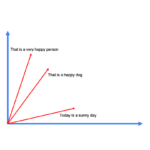If you’re living in the 21st century, you must be aware of the fact that remote work in the ‘future of work’ has no cap. Monitoring the performance of your employees who work from home is important( like really, really important)
By doing this, you may improve employee performance (remote employees) and achieve the strategic objectives of your company. Tracking also allows you to monitor the progress of your team. Such insights can help you address the areas of an employee’s employment that they struggle with and help them overcome them successfully.
It will result in you becoming familiar with what your employees need and improving their talents, skills, and overall work. Hence, performance tracking becomes an extremely essential tool for businesses to have.

The Revolution of work: Remote work
The days of working in an office from 9 to 5 are long gone. Employers and workers now have a wide range of options thanks to remote work. Geographic boundaries have been removed, commute times have been cut in half, and work-life balance has been reimagined.
However, irrespective of these benefits, a main issue remains: How can businesses make sure that their remote workers are operating at their peak efficiency and productivity? Employee productivity monitors can help in this situation by providing information that spans the distance between managers and their dispersed workforce.
Importance of Evaluating Your Employees’ Performance
You gain a lot of benefits by having performance-tracking software. These advantages include:
- Increased effectiveness and productivity.
- Better control over deadlines.
- Improved tracking of discipline.
- The capability of remotely assessing an employee’s strengths and faults.
- The capacity to identify the responsibilities and talents that each person would be most suited for.
- Improved morale among workers.
- A culture at work that inspires employees to excel.
Reasons Why You Should Have an Employee Productivity Tracker for Your Remote Team
Even for dispersed teams (hybrid or totally remote workforces), measuring employee productivity can be challenging, but it is necessary to make sure that everyone is on task and working toward the same corporate objectives.
Here are some reasons why you must wanna have employee productivity tracker for your team
Monitoring Tasks in Real-Time
The power of remote employee time-tracking software to calculate time spent on specific tasks is a solid, helpful, and dreamy feature. This is useful data to have if you want to see how quickly each employee can do specific tasks so that you can properly plan deadlines.
Additionally, compared to office workers, remote workers are far less likely to indicate that they are having trouble utilizing a platform or software. An employee may require further training or help if they are taking longer than normal to complete a task.
Efficient Project Management
It may be challenging for team managers to determine who is in charge of which project when working remotely. But work transparency will be clearer if everyone on a team registers their hours and adds the specifics of the jobs and projects.
Therefore, managers should consider redistributing the jobs if certain employees are overworked. Additionally, time-tracking software will allow you to monitor the progress of a project, so answering clients gets easier, better, and more accurate.
Define Expectations Clearly
Clearly defining expectations for remote workers is one of the most crucial things managers can do. Employees will be able to comprehend what is required of them if you are clear about what is expected of them, including tasks, deadlines, and quality standards.
Besides, it gives you the option to track their development on a project. Making sure that employees are focused on the right task and pursuing the right objectives also involves setting clear expectations.
Makes it Easier For You to Get to Know Your Remote Workers Better
Finally, you’re not completely in the dark about the working patterns of your remote team if you have all this information and insight. You’ll know how productive they are, what software they prefer using when they typically take breaks, which jobs they excel at and which they struggle with, and much more, even if you don’t need to see them in the office.
Quantifying Overall Employee Productivity
Now for the tricky question: Do your remote workers put in any work? Do they struggle with the deadlines because they don’t have enough time, or because they’re relaxing on their balcony or watching TV? There is only one technique to detect them because you can’t actually see them: remote computer monitoring.
However, they additionally give you some really helpful productivity statistics that might prove how much time is spent working and how much is lost.
Monitor Attendance
Remote workers, by definition, don’t report to work. They are invisible at their desks and are unable to swipe their keycards. The most adaptable alternative for attendance monitoring, a work tracker, is the natural choice given how challenging it is to keep track of hours spent online.
You may arrange for remote computer monitoring software to keep track of turning on the computer as a clock-in and the last mouse movement or keystroke as a clock-out if your workers have company PCs that they use exclusively for work.
Final Thoughts
You miss out on a lot of things when you don’t regularly interact face-to-face with your staff, and managing a remote workforce is challenging. Fortunately, a work tracker may aid in filling in some of that gap. This is why you want to think about including it in your digital workspace along with other useful tools.
Employee performance may be significantly increased by using performance-tracking techniques for remote teams. Performance tracking may identify opportunities for improvement and preserve an established vision for employees by setting clear goals and using the best tools.








